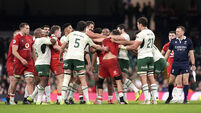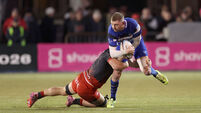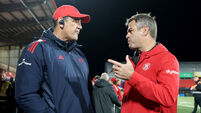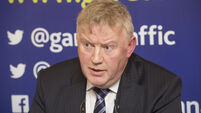Home Comforts
LAST YEAR Niall Woods was rooting through some old cuttings when he came across a match report. Munster v Leinster, 1993, Donnybrook. Attendance: 2,000.
Tomorrow there will be 40 times more supporters in Croke Park for Munster v Leinster in the Heineken Cup semi-final. The fact that so many Irish-based professionals can drive the two provinces to the last four of Europe can be seen as a vindication of the Irish Rugby Football Union’s (IRFU) bold decision to keep their top players in Ireland rather than lose them to the Premiership, which happened wholesale in the early days of professionalism.















